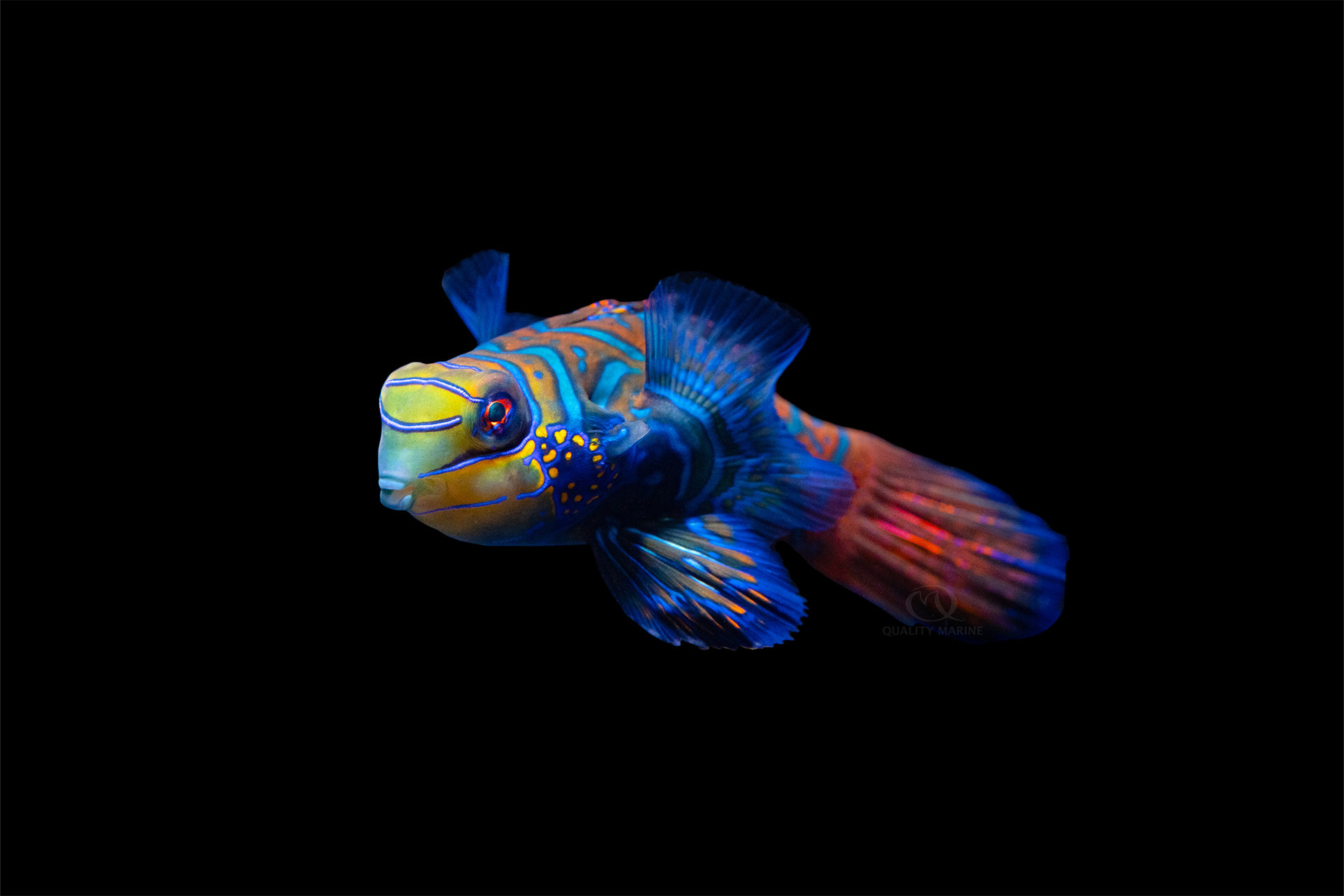Not all Dragons are Huge

The Green Mandarin (Synchiropus splendidus) is one of many fishes that could lay rightful claim to the title “the most beautiful fish in the world”. They come from the family Callionymidae or the “Dragonets”. They reach a size of about three inches and boast a red body covered in green stripes with blue margins to the fins.
Green Mandarins are widespread throughout the Western Pacific, where they are found in protected lagoons and reef areas. They are not strong swimmers, so they prefer areas of low current and these areas are often silty, with coral rubble and macro algaes leading to a cornucopia of small live foods.
These fish do best in well established reef aquariums, with live rock or at the very least rock that has been in aquariums for a long time. Larger aquariums are also better, as are aquariums with large sumps that have habitat for their natural food source which are copepods, amphipods and other small invertebrates. Larger aquariums provide them with more area to graze, and the established rock and sump spaces provide good habitat for those live foods as well.
As somewhat mentioned earlier, mandarins prefer live foods. They have a high metabolism that is offset in the wild through constant foraging. Small meals can be provided for a mandarin as many times as possible throughout the day, but in the end live micro invertebrates are what help mandarins to thrive. These animals can be cultured outside the aquarium, or encouraged inside, but there cannot be too much space, or rock, or habitat for a mandarin to scrounge up food from. In house we supplement their diets with Nutramar copepods and Nutramar Ova, both of which are nutritious, and eagerly taken by the Dragonets. Diet will be the number one determining factor in your success with this species, especially now that Quality Marine has captive raised species that are acclimated to live in aquariums from day one.
Green Mandarins have been bred in captivity, and are commercially available captive bred! Spawning and rearing mandarins at home is possible, but they are broadcast spawners so the eggs will drift with the current and be picked up by filters etc. You will need a larval trap to catch the young and then to have phyto and zooplankton cultures running to feed the almost microscopic fry. Needless to say, this is out of the realm of possibility for all but the most advanced hobbyists.
Few people can claim that they have kept a fish as beautiful as the Green Mandarin, but now with captive bred fish from Quality Marine it has never been easier! These fish are hardier and more eager to accept non-live food, and will help the eager home aquarist on a quest to breed something that would be difficult, but not unattainable. Call your LFS and ask for captive bred Green Mandarins from Quality Marine today!